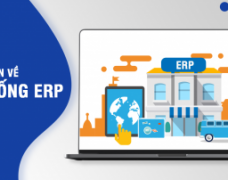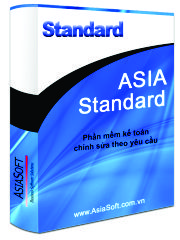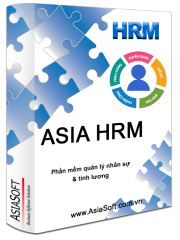 17 May, 2018
17 May, 2018
Measure the liquidity of the business
In the payment relationship, most businesses (enterprises) tend to finance capital through short-term debt. The question is whether the enterprise has the ability to pay and pay the debts on time? This is a question, not only enterprises themselves but also banks, suppliers, investors, … are also very interested. To answer the above question, it is necessary to measure the liquidity of enterprises. Businesses mainly use ratio to measure liquidity. However, each ratio has its own pros and cons in measuring liquidity. Focus on analyzing the disadvantages and limitations of current payment ratios.
First, the current ratio. Expresses the relationship between all current assets and current liabilities of the enterprise and is calculated as follows:
Khh = Current assets/Current liabilities
Theoretically, the higher the current ratio, the better the company’s solvency. However, in fact, sometimes the inventory of the enterprise is large, the current ratio is high, but it is not sure that the liquidity of the enterprise is good. If, in market conditions, there are bad fluctuations, inventories are stagnant and of poor quality, making it difficult for inventories to be converted into cash. At this time, it is difficult for businesses to pay their due debts. Although, the current ratio is high. Therefore, in many cases, the current ratio does not accurately reflect the solvency of the enterprise.
Second, quick ratio, which is similar to current ratio but removes the portion of inventory assets from the numerator. Because that is, the division must hold a permanent reserve for business whose value and conversion time to cash are uncertain. Specifically, this ratio is calculated as follows:
Short-term = (current assets – Inventories)/Current liabilities = (Cash + cash + receivables)/Current liabilities
According to the above formula, we see in the short-term assets used to pay short-term liabilities of the quick ratio, including receivables, but not always the business can collect and recover on time these accounts receivable. At that time, the current solvency ratio will not accurately reflect the solvency of the enterprise.
The limitation of these two indicators is that they are based on the concept of liquidating all short-term assets of the company, including those that are difficult to convert into cash, to meet all short-term liabilities. In practice, this is not possible, as a business needs to be seen as a going concern. The following example, will illustrate the limitation of using the above two ratios in measuring the liquidity of enterprises, assuming data of two enterprises A and B as shown in Table 1.
Table 1
| Targets |
DN A |
DN B |
| 1. Short-term assets | 1.500.000.000đ | 1.000.000.000đ |
| In which: a. Inventory | 800.000.000đ | 400.000.000đ |
| b. Accounts Receivable | 600.000.000đ | 350.000.000đ |
| 2. Short-term debt | 350.000.000đ | 350.000.000đ |
| 3. Average cost of goods sold per day | 5.000.000đ | 5.000.000đ |
| 4. Average revenue per day | 7.000.000đ | 7.000.000đ |
| 5. Current payout ratio: (5) = (1)/(2) | 4,29 | 2,86 |
| 6. Quick ratio: (6) = ((1) (a))/(2) | 2,00 | 1,71 |
| 7. Inventory conversion period: (7) = (a)/(3) | 160 ngày | 80 ngày |
| 8. Customer collection period: (8) = (b)/(4) | 86 ngày | 50 ngày |
| 9. Payment period for suppliers (9) = (2)/(3) | 70 ngày | 70 ngày |
Based on the above data, it shows that DN A has a current ratio of 4.29 and a quick ratio of 2.00. Meanwhile, DN B has a current ratio of 2.86 and a quick ratio of 1.71. Thus, if only based on current solvency and fast solvency, DN A’s solvency is better than DN B. But analyzing them deeply, we see: DN A needs 86 days, to collects receivables and takes 160 days for the inventory to turn around. DN B needs 50 days, to collect receivables and it takes 80 days, inventory turns 1 round.
Thus, in the above example DN A is very illiquid. Although, current ratio and quick ratio are very high. Because DN A’s liabilities come faster than the rate at which inventory and receivables are converted to cash. Meanwhile, DN A cannot pay its due debts without cash. At this point, DN B has better liquidity than DN A because the conversion process of inventory and receivables is faster.
Third, immediate solvency ratio: This is the ratio showing the relationship between cash and cash equivalents compared to current liabilities:
Ktt = Cash capital / Short-term debt
This ratio, over the numerator, excludes inventory and accounts receivable as there is no guarantee that it can be quickly converted to cash to meet short-term liabilities in a timely manner. However, very few enterprises will have enough cash and cash equivalents to fully and promptly cover short-term liabilities. Because if an enterprise holds a large amount of capital in cash, this will make the efficiency of asset use will be low. Therefore, the use of instant solvency to assess the liquidity of enterprises is sometimes inaccurate. Although, enterprises have low cash and cash equivalents (low instant solvency), but if the inventory turnover and receivable turnover are fast, the liquidity of the business will be good.
Remarks, the use of the three ratios mentioned above in measuring liquidity has certain limitations. Not enough to evaluate, the liquidity of enterprises and the cause of those limitations is because all three ratios above are only considered in the static state. Therefore, in order to overcome the above limitations, it is necessary to have a complete and relatively correct view of the liquidity of an enterprise. In addition to the above three ratios, enterprises can use the Cash Conversion Cycle index ( Cash Conversion Cycle-CCC). This is the index introduced by Verlyn Richards and Eugene Laughlin in 1980 in their article “A cash conversion cycle approach to liquidity analysis”. In other words, the cash conversion cycle reflects the length of time it takes for a business to sell its inventory, collect its receivables, and pay its payables. The cash conversion cycle is calculated by the following formula:
CCC = ICP + RCP – PDP
Inside:
– ICP is the inventory conversion period (ICP): This indicator reflects the number of days of an inventory turnover and is calculated as follows:
ICP = Average inventory value/Average daily cost of goods sold
– RCP is the Receivable Conversion Period: This indicator reflects the average number of days of a debt cycle, from sales to collection and is calculated as follows:
RCP = Average balance of receivables/Average daily sales
– PDP is the Payable Deferral Period: This indicator reflects the number of days required by the enterprise to pay its payables and is calculated as follows:
PDP = Average balance of liabilities/Average daily cost of goods sold
From the formula for calculating CCC, we see that the lower this ratio, the shorter the cash conversion cycle, reducing the amount of stagnant working capital. Thereby reducing the need for working capital, improving operational efficiency, and increasing liquidity for businesses.
In the above example, the cash conversion cycle of DN A and B is calculated as follows:
CCCA = ICPA + RCPA – PDPA = 160 + 86 – 70 = 176 (days)
CCCB = ICPB + RCPB – PDPB = 80 + 50 – 70 = 60 (days)
Based on the above calculation results, we see that the cash conversion cycle of DN B (60 days) is shorter than that of DN A (176 days), that is, the liquidity of DN B is better than DN A.
By: Journal of Accounting and Auditing
















